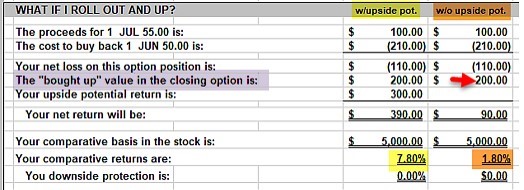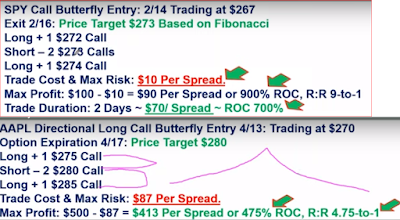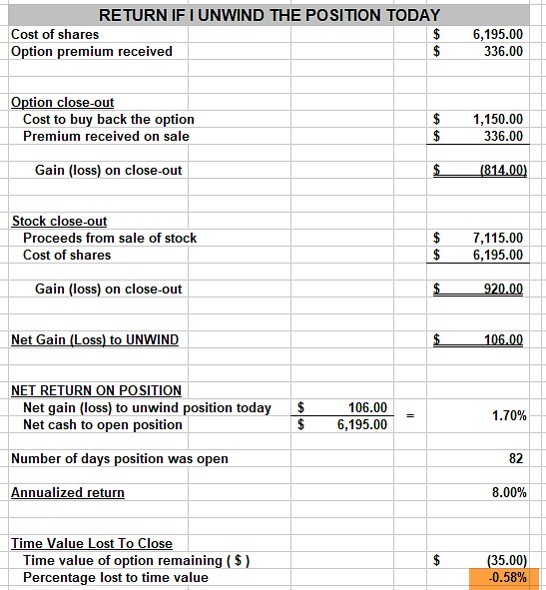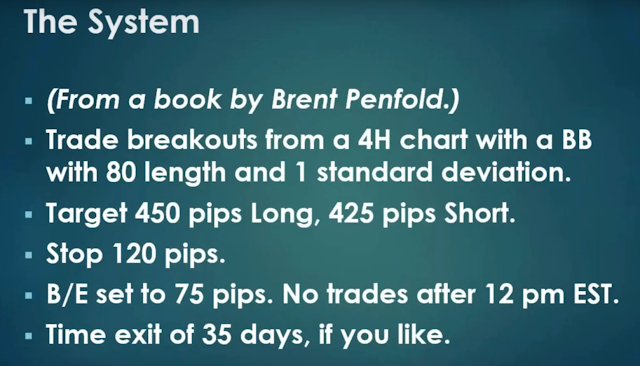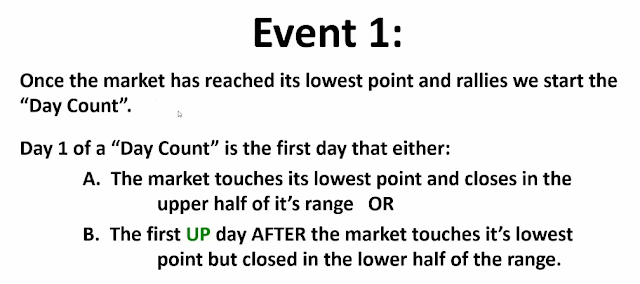Covered Call
Stock Selection
We select the top-performing Dow 30 stocks that have been out-performing the S&P 500 in both three-month and one-year time frames as shown in our BCI Blue Chip Reports.
Option Selection
For this article, I used the first five stocks in the report and checked the option-chains for out-of-the-money strikes that generated 1%-2% for one-month initial time-value returns. I entered the option-chain information into the blue cells of the multiple tab of the Ellman Calculator.
Exit Strategies
Once we have entered a covered-call trade, we move to position-management mode. A complete detailed discussion of exit strategies is beyond the scope of this article, but these include:
20%/10% guidelines, “Hitting a double”, Rolling down, Selling the stock after closing the short call, Mid-contract unwind exit strategy, Rolling-out, Rolling-out-and-up
EXIT strategy -
How Do You Create an Exit Strategy?
I personally like to keep it simple. Here’s a simple, yet powerful, profit-taking strategy: P = 2 x R
This means: Take profits when you make twice as much money as you risk. Here’s an example: I highly recommend using the 2% rule for your risk, i.e., you should never risk more than 2% of your trading account on any given trade. So. if you have a $10,000 account, don’t risk more than 2% = $200. When you risk $200, you should take profits as soon as you make $400. With a simple profit-taking strategy like that, you will make money even if you’re wrong half of the time.
in option buy at (.70 delta) 25.00 sell if it comes to 20 so risk is 5. sell at 30 so reqrd is 10 (this is my view)
Advanced Profit-Taking Strategies
Here’s the challenge...when you're using the simple profit-taking strategy that I outlined above, you might leave some profits on the table. Because when a stock is more volatile, you could get 3 x R, or maybe even more. As an example, when you look at the stock SLCA, you could easily get 5 x R, i.e., you could get $1,000 for every $200 that you risk. In this case, what do you do? Do you try to get 5 x R, even though it is more aggressive? Or do you stick with the more conservative 2 x R?
Is There a Best Way to Exit a Trade?
Here’s what I personally like to do. I like to use the best of both worlds. I take profits for 1/2 of my position when I see 2 X R, and then I take the remainder of the profits when the stock gets to my optimized profit target, i.e., 5 x R.
Here’s an example:
Let’s say you’re trading 100 shares of ABC. Your risk is $2 per share, i.e. $200 for 100 shares. Your conservative profit target is 2 X R = 2 x $2 = $4. Your optimized profit target is 5 X R = 5 x $2 = $10.
I personally sell 50 of the 100 shares as soon as I can get $4 in profits per share. In this case, I would make 50 x $4 = $200. Now I cut the stop loss for the remaining 50 shares in half. Instead of risking $2 per share, I will now risk only $1 per share. Since I have 50 shares left, my risk is now reduced from $200 to $50. But the best: since I already sold half of my shares, I already made $200.
This money has been deposited into my account. So, if the stock turns around now and I get stopped out, I only give back $50 of these $200. Therefore, my total profit for this trade would be $150.
As you can see, once I take profits, I cannot lose on this trade anymore—even if the stock turns around. And if it keeps going up, I can sell the remaining 50 shares when the stock moves up $10, which is my optimized target. In this case, I would realize an additional $500 for a total of $700.
3 Different Profit-Taking Strategies
Let’s recap:
- Conservative Profit Taking Strategy:- In this case, you would risk $200 to make $400. Not bad.
- Optimized Profit Taking Strategy:- In this case, you would risk $200 to make $1,000. Sounds better, but it’s less likely. The stock might turn around and you get stopped out before the stock reaches this aggressive target.
- My “Best of Both Worlds” Profit-Taking Strategy:- In this case, you would risk $200, and as soon as the stock moves up by $4, you take profits for half of your position. Now you can’t lose anymore and have a “free trade” that hopefully achieves your optimized profit target.
I can relax, sit back, and don’t have to worry about this trade anymore. If everything works out, I’m making $700 on this trade. If it doesn’t work out, I still make $150.
Important!
This example is for an account of $10,000, and if you get the $700 in profits, you make 7%—on one trade! That’s pretty good! As you can see, THIS is smart trade management.
**
Price Action
- Is price at an area that fits in with my analysis?
- Do I have momentum divergence as price entered that area?
- Do I have reversal candlestick patterns present at that area?
- If conditions 1 -3 are all met, do I have sufficient capital to take a trade associated with the risk on this particular setup?
How to find momentum Divergence
 |
| Momentum divergence |
Reversal Candle stick patterns
Reversal Candlesticks, Hammer Candlesticks, Flanked Doji’s
Risk, SL




